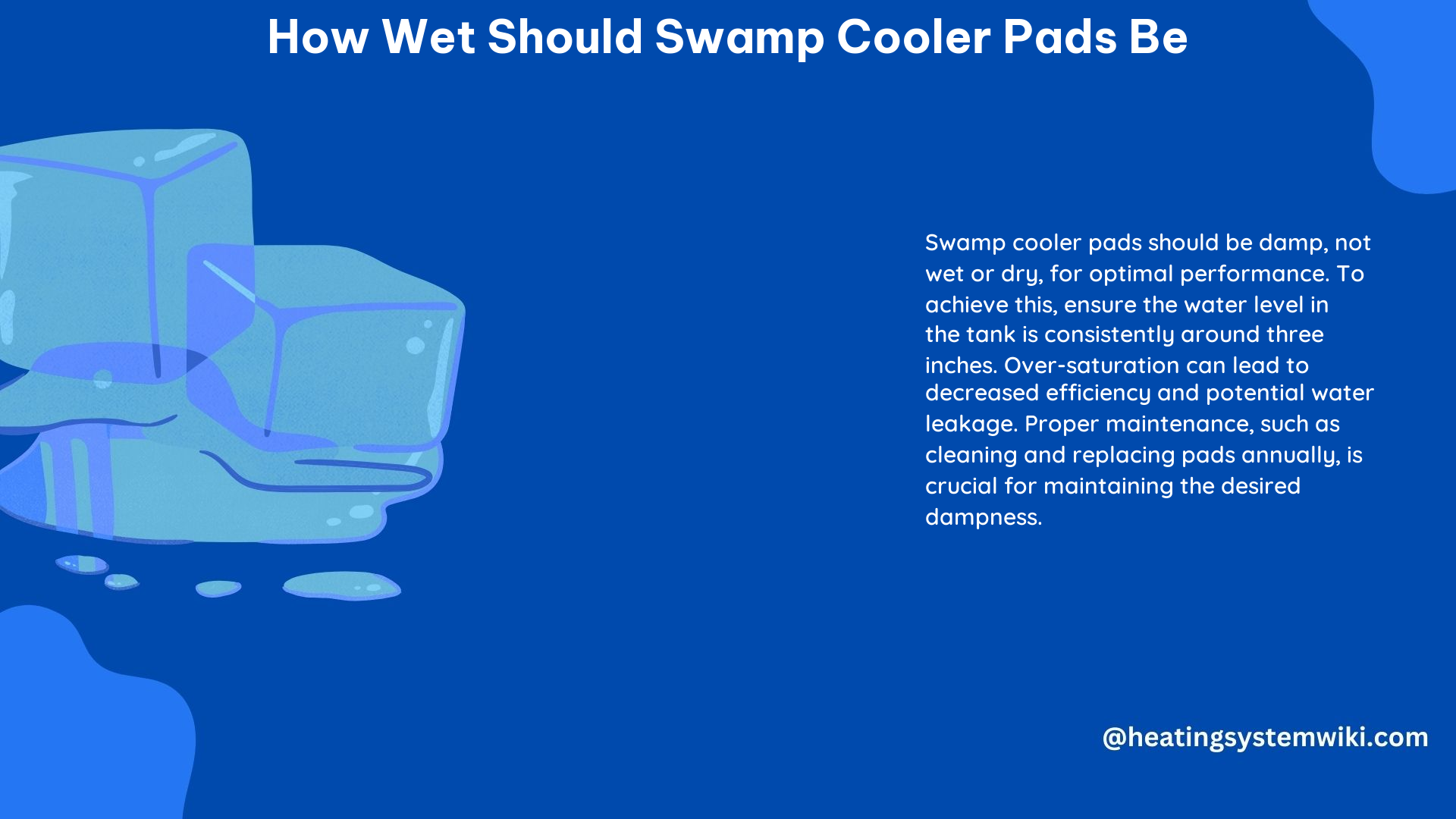Swamp coolers, also known as evaporative coolers, are a popular and energy-efficient way to cool homes, especially in dry climates. The key to their performance lies in the wetness of the cooling pads. Proper pad wetness is crucial for efficient evaporation, which is the underlying principle behind the cooling process. In this comprehensive guide, we’ll dive deep into the optimal wetness level for swamp cooler pads and explore the factors that influence it.
Understanding the Importance of Pad Wetness
Swamp coolers work by drawing in hot, dry air and passing it through water-saturated pads. As the air flows through the pads, the water evaporates, absorbing heat from the air and cooling it down. The more water the pads can hold and evaporate, the more effective the cooling process will be.
Ideally, the cooling pads should be thoroughly saturated with water, but not to the point of dripping. The optimal moisture content for the pads is typically between 70-90% of their maximum water-holding capacity. This range ensures that the pads are wet enough to facilitate efficient evaporation while avoiding excessive water usage and potential water damage.
Factors Affecting Pad Wetness

Several factors can influence the optimal wetness level for swamp cooler pads. Understanding these factors can help you achieve and maintain the perfect balance for your specific setup.
Pad Material and Design
The type of material used for the cooling pads and their design can affect their water-holding capacity and the rate of evaporation. Common pad materials include aspen wood fiber, cellulose, and synthetic materials like polypropylene. Each material has its own unique characteristics that impact the optimal wetness level.
For example, aspen wood fiber pads generally have a higher water-holding capacity compared to cellulose pads, allowing them to maintain a higher moisture content. Synthetic pads, on the other hand, may require a lower moisture level to prevent excessive water usage and potential damage to the cooler.
Climate and Ambient Conditions
The local climate and ambient conditions, such as temperature, humidity, and wind, can significantly influence the optimal wetness level for swamp cooler pads. In hot, dry climates, the pads may need to be wetter to compensate for the rapid evaporation rate. Conversely, in more humid environments, the pads may require a lower moisture content to prevent oversaturation and water dripping.
Water Quality
The quality of the water used to saturate the cooling pads can also impact the optimal wetness level. Hard water, which contains high mineral content, can lead to the buildup of scale and deposits on the pads, reducing their water-holding capacity and efficiency. In such cases, using softened or filtered water may be necessary to maintain the ideal wetness level.
Achieving and Maintaining Optimal Pad Wetness
To ensure your swamp cooler operates at peak efficiency, follow these steps to achieve and maintain the optimal pad wetness:
-
Initial Pad Saturation: Before starting the swamp cooler, soak the cooling pads in water for at least 30 minutes to allow them to fully absorb the moisture. This will ensure the pads are thoroughly wet and ready for operation.
-
Water Reservoir Filling: Fill the water reservoir to the recommended level, as specified by the manufacturer. This will provide a sufficient water supply to keep the pads continuously wet during operation.
-
Pad Inspection and Adjustment: Regularly check the wetness of the cooling pads during operation. Use your hand or a moisture meter to assess the moisture content. If the pads appear to be drying out, increase the water flow or refill the reservoir as needed.
-
Maintenance and Cleaning: Regularly clean and maintain your swamp cooler to ensure optimal performance. This includes inspecting the pads for any cracks, mildew, or other damage, and replacing them if necessary. Additionally, clean the water tank, filters, and other components to prevent the buildup of mineral deposits or algae, which can affect the pad wetness.
-
Seasonal Preparation: Before the start of the cooling season, thoroughly inspect and prepare your swamp cooler. This may involve replacing the cooling pads, cleaning the unit, and ensuring all components are in good working order. At the end of the season, drain the water from the unit and store it properly to prevent any damage during the off-season.
By following these steps and understanding the factors that influence pad wetness, you can ensure your swamp cooler operates at its best, providing efficient and comfortable cooling for your home.
Conclusion
Maintaining the proper wetness level for your swamp cooler’s cooling pads is essential for its efficient and effective operation. By understanding the importance of pad wetness, the factors that affect it, and the steps to achieve and maintain the optimal level, you can maximize the performance of your swamp cooler and enjoy the benefits of this energy-efficient cooling solution.
